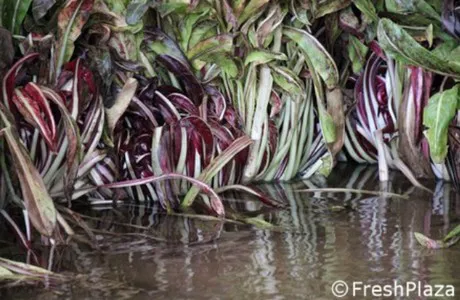
Radicchio rosso di Treviso Tardivo (RTT) is a vegetable that needs a forced water process before the sale. Such practice presents a significant environmental impact due to the high water volumes used and then dispersed into the environment. A medium-sized producer uses approximately 35 thousand m3 of water, so the sustainability of this production process needs to be improved.
 The research group coordinated by professor Paolo Sambo from DAFNAE at the University of Padua tested a system to reduce water use by developing a pilot system with recycled water in a closed loop through an ozone treatment.
The research group coordinated by professor Paolo Sambo from DAFNAE at the University of Padua tested a system to reduce water use by developing a pilot system with recycled water in a closed loop through an ozone treatment."Our initial results suggest that the ozone treatment could be applied and is suitable for growers, who could save up to 95% of water volumes."
Even though these results are preliminary and must be confirmed by further tests, they prove that ozone can sanitize waters rich in suspended solids obtaining characteristics comparable to drinkable water and avoiding water stagnation. "This technique should be developed further and adapted for the sanitation of water for other products as well."
Source: Carlo Nicoletto, Carmelo Maucieri, Paolo Sambo, 'Effects on Water Management and Quality Characteristics of Ozone Application in Chicory Forcing Process: A Pilot System', 2017, Agronomy, Vol. 7(2), 29.
